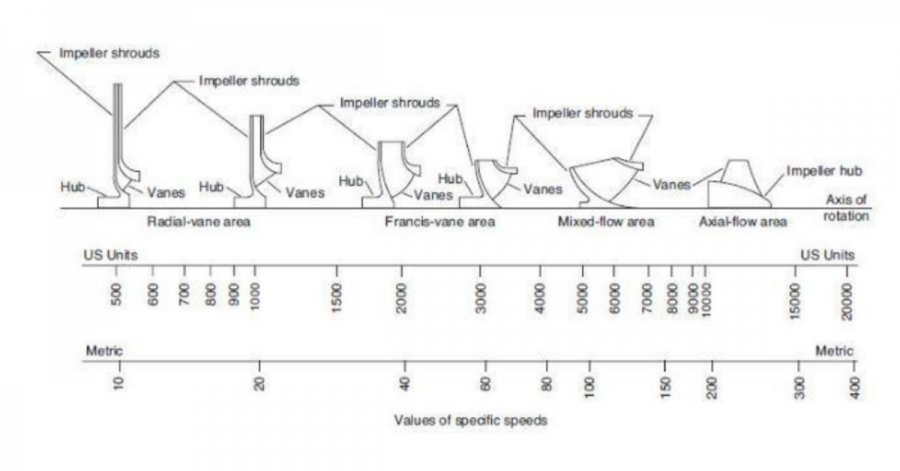Theory bites is a collection of basic hydraulic theory and will touch upon pump design and other areas of pump industry knowledge.
Specific speed is defined as “the speed of an ideal pump geometrically similar to the actual pump, which when running at this speed will raise a unit of volume, in a unit of time through a unit of head”.
Specific speed Ns, is used to characterize turbomachinery speed: It is an index used to predict desired pump performance. It predicts the general shape of a pumps impeller.
It is this impeller’s “shape” that predicts its flow and head characteristics so that the designer can then select a pump most appropriate for a particular application.
Once the desired specific speed is known, basic dimensions of the unit’s components can be easily calculated.
Pumps are traditionally divided into three types: radial flow, mixed flow, and axial flow.
When you look at the chart you can see there is a gradual change from the radial flow impeller, which develops pressure principally by the action of centrifugal force, to the axial flow impeller, which develops most of its head by the propelling or lifting action of the vanes on the liquid.
Post your questions in the comments section below!




